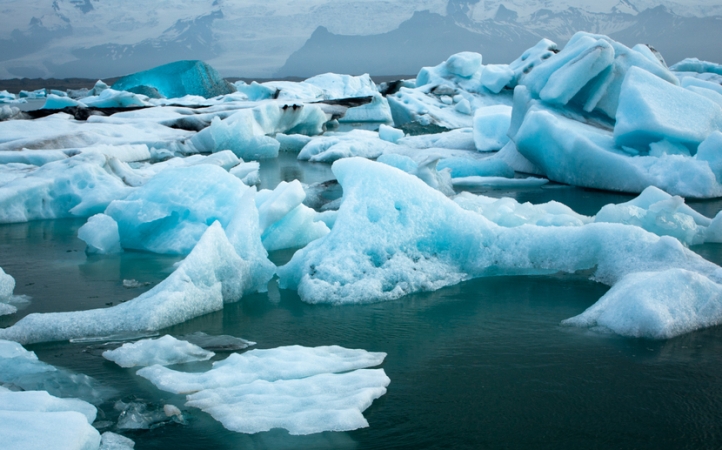Global warming behind Arctic’s ‘green ice mystery’

Thinning sea ice – a result of global warming – is causing microscopic plant life to extensively bloom at the North Pole, potentially disrupting the marine food chain, according to scientists who claim to have solved the Arctic's green ice mystery. In 2011, researchers observed something that should be impossible – a massive bloom of phytoplankton growing under Arctic sea ice in conditions that should have been far too dark for anything requiring photosynthesis to survive. Using mathematical modeling, researchers from the Harvard John A Paulson School of Engineering and Applied Sciences (SEAS) found that thinning Arctic sea ice may be responsible for frequent and extensive phytoplankton blooms, potentially causing significant disruption in the Arctic food chain. Phytoplankton underpins the entire Arctic food web. Every summer, when the sea ice retreats, sunlight hitting the open water triggers a massive bloom of plankton. These plumes attract fish, which attract larger predators and provides food for indigenous communities living in the Arctic. Phytoplankton should not be able to grow under the ice because ice reflects most sunlight light back into space, blocking it from reaching the water below. However, over the past decades, Arctic ice has gotten darker and thinner due to warming temperatures, allowing more and more sunlight to penetrate to the water beneath. Large, dark pools of water on the surface of the ice, known as melt ponds, have increased, lowering the reflectivity of the ice. The ice that remains frozen is thin and getting thinner."Our big question was, how much sunlight gets transmitted through the sea ice, both as a function of thickness, which has been decreasing, and the melt pond percentage, which has been increasing," said Chris Horvat, graduate student at SEAS. "What we found was that we went from a state where there wasn't any potential for plankton blooms to massive regions of the Arctic being susceptible to these types of growth," said Horvat. The team's mathematical modelling found that while the melt ponds contribute to conditions friendly to blooms, the biggest culprit is ice thickness. Twenty years ago, only about three to four per cent of Arctic sea ice was thin enough to allow large colonies of plankton to bloom underneath.
Read more: http://www.daily-sun.com/post/216315/Global-warming-behind-Arctics-green-ice-mystery

